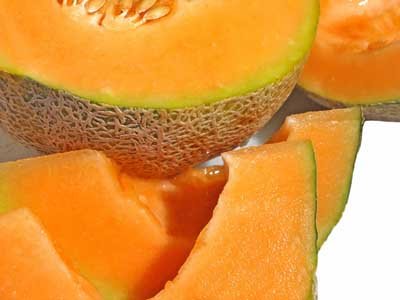The intertubes are on fire today with speculation of what might be in a report that is due to be released by the U.S. Food and Drug Administration detailing the results of of the recent Listeria-in-cantaloupe outbreak that has been linked to at least 23 deaths and 116 illnesses in 26 states.
Denver CBS4 investigative reporter Rick Sallinger was cited in one story as saying that he has learned that the FDA report will detail FDA’s best guess as to what was the root cause of the outbreak. According to KKTV (CO), operators at Jensen Farms were told that no Listeria was found on the farm itself, but were found at the farm’s packing facility in Granada during an initial post-outbreak inspection.
Based on this information, Bill Marler says he isn’t surprised that packing equipment is where the case is centered. “Listeria loves cool temperatures, and that’s where it grows the best (optimum temp is 30C-37C -ben), so I am not surprised that the facility may have been less than sterile,” Marler said.
From the field cantaloupe are harvested then transported to the packing shed. There they are washed before being shipped, and moisture may be a key factor in the outbreak.
A likely scenario is that there was some environmental source (or sources) of the three separate strains of Listeria monocytogenes. Maybe it was wild animals. Maybe it was domestic. These strains ended up in the packing facility where cantaloupes are cooled, washed (in some facilities a couple of times, once rinse to remove all the mud/grit and a second wash where chlorine may or may not be added) and packed. This water/temperature/equipment combination is a decent place for Listeria growth, cross-contamination (spread from a couple of contaminated cantaloupes to a whole lot of them) and distribution of a problem. If wash water is found to be a root cause, water temperature, pH/chlorine/ozone levels and turbidity could all be factors. I have no idea what the line at Jensen Farms’ packing facility looks like but if it’t anything like the below, the plastic curtain seen at 1:40 would be something that I’d worry about making sure was clean. And then the brush dryer machine seen at 3:43 (which could be blowing aerosolized Listeria around, like a handdryer. A little bit of contamination can be spread through a whole bunch of cantaloupes if there is some environmental source, water is added and sanitation isn’t kept up.
There isn’t a lot of information about how the cantaloupes were transported, handled at retail or in peoples homes yet (temperature abuse after packing could be a real factor here too – lots of Listeria is needed to make someone ill, unlike some other foodborne illness pathogens. I hope that there is some information on that within the report as well.
Sallinger learned the FDA report will deal not only with the root cause of the deadly outbreak, but will make recommendations how to prevent it from happening in the future.
While there are potential consequences for the industry on how their best practices might be changed or adjusted when the report comes out, this step is absolutely necessary; 23 deaths and 116 other illnesses from folks who wanted to eat something healthy is a real problem. The good producers out there, those who are concerned that there current practices could lead to an incident as horrific as this in the future, will welcome recommendations on what they can do to avoid it.
